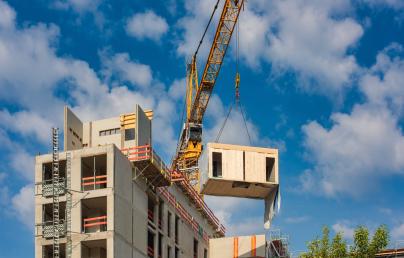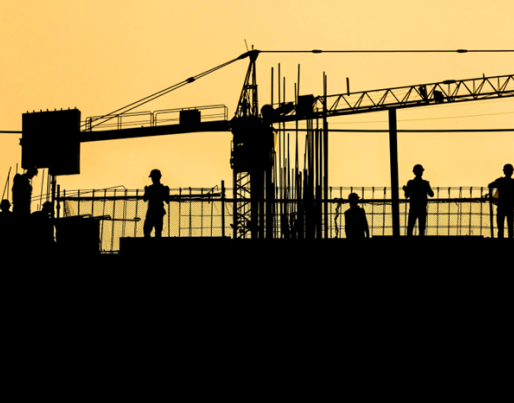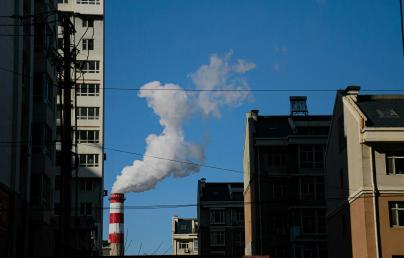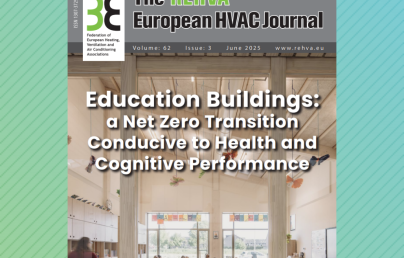
Future green construction jobs: skills and decent working conditions

Future green construction jobs: skills and decent working conditions
This brief aims to support workers in developing informed collective bargaining strategies to ensure equitable access to new green employment and improved working conditions.
In 2018, the International Labour Organization predicted 24 million new green jobs would be created by 2030. However, jobs growth to date has been moderate, with the percentage of green jobs in OECD countries only rising from 16% to 18% between 2011 and 2021.
Some European countries and New Zealand have led the way in green employment creation. In Europe’s Baltic and Nordic countries, the UK, Switzerland, and France, 24% or more of all jobs across sectors are green, far more than in Southern and Eastern European countries. Regional imbalances have been found within countries, with capital regions usually presenting the highest proportions of green jobs and experiencing ongoing growth in green employment, exacerbating intra-country imbalances.
The built environment accounts for 37% of global emissions, with an urgent need to decarbonise buildings and construction. OECD data shows that 30% of current jobs in the construction sector are polluting, and 50% of construction jobs are green, but it is unclear whether green employment is being created where polluting or brown employment is being lost.
Green transition in construction
Construction is one of the sectors that is predicted to gain the most from the green transition in terms of employment creation. The rollout of large investment programmes with earmarked funding per country, such as the EU’s National Resilience and Recovery Plans and Renovation Wave, makes mapping green employment creation possible, with key hotspots identified in Italy, Spain, France, and Poland. However, these predictions have yet to materialise, with growth in the number of people working in construction in some European countries being slower than predicted, or numbers even falling. The issue is not purely one of worker supply, with evidence showing a smaller number of green vacancies in construction than in other sectors such as manufacturing, with some of the technological innovation analysed in this research indicated to be partly responsible.
New technologies, such as off-site construction and renewable energies, can absorb the expected employment growth in construction, as well as shift the geographical distribution of jobs from the construction site to the supply chain. There is little information about where this employment creation is taking place, but research shows localised employment growth in energy efficiency, and regions with a traditional production of modular homes (such as caravans) have a higher chance of becoming off-site construction hubs due to skills and workforce availability.
The number of workers moving from brown or polluting construction jobs to green employment has only been analysed in a few geographies, with wide evidence suggesting small but growing numbers. In the UK, movers to green jobs are more often female compared to the average green worker, and younger and with a higher degree of formal education than the average brown worker. Brown to green movers have increased their wages, but these remained lower than those of the average worker entering a green employment, indicating a potential brown penalty.
Owing to the formal education gap between brown and green employment, and the difference in tasks performed in polluting and green jobs, the green transition debate has mostly focused on the need to provide skills to and to re-skill existing workers. Projected in-demand skills for the construction and engineering workforce include waste management, energy efficiency, and digital skills, such as programming and robot management, or knowledge of
AI-assisted tools, 3D modelling, GIS, CAD or BIM skills. This brief shows some overlap between the skills needed for construction and those forecast for off-site construction, including knowledge of digital design and artificial intelligence and virtual reality-assisted design tools.
Key aspects when decarbonising the construction sector
In the push to decarbonise the built environment, it will be crucial to ensure green jobs address the construction sector’s longstanding issues of high injury rates, the gender gap, precariousness, and informal work. Closing the deficit in decent working conditions, addressing occupational safety and health (OSH) risks, as well as promoting workers’ right to unionise will therefore be central to the future of green employment and the wider green transition.
Aside from the analysis of wage differentials, limited research has been undertaken on green employment working conditions, across sectors and in construction in particular. Country-specific studies draw conflicting conclusions about the quality of green employment conditions across sectors. In the UK, the proportion of temporary contracts is higher in brown employment, but green workers are more often self-employed. In Portugal, green jobs have a lower level of structured provision and coverage of OSH services, a higher incidence and severity of accidents, and
lower levels of professional qualification. In the construction sector, different studies in the UK, US, Australia, and Sweden have found that OSH risks are lower in off-site construction.
To conclude, the growth in green jobs has so far been significantly slower than forecast. Regional disparities in green employment are clear, but wider geographical analyses are needed beyond OECD and EU countries. In the construction sector, where significant job growth is predicted, challenges persist, including a deficit in decent working conditions and the different skill requirements for green jobs. Without providing equitable access to green employment opportunities and improving working conditions, the jobs needed to deliver the green transition will not be created or filled.
Addressing these issues requires collaboration between the industry, social partners, employers, and trade unions at all levels of government to ensure not only that environmental objectives are met, but also social equity and that decent work is accessible for all. Only by creating quality green jobs and providing clear information on where they will be located, as well as what skills they will require, will it be possible to bring the green transition forward.
This policy brief provides a comprehensive overview of the risks associated with skill mismatches and the deficit in decent working conditions in the green transition, particularly focusing on workforce impact, geographical distribution, required skills for new green jobs, and changes in working conditions.
Future_Green_Contruction_Jobs_June2024.pdf
English (8.35 MB - PDF)
